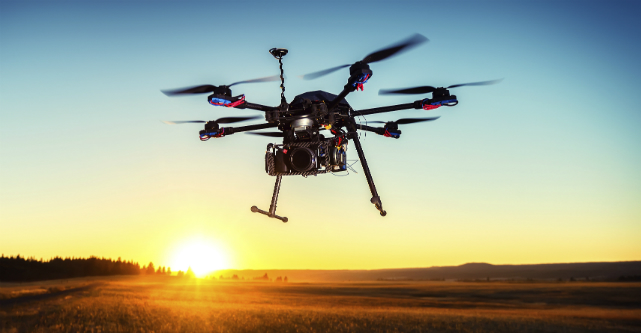
By Omar Mubin
In Australia, unmanned aerial vehicles – or drones – are now being used by the police in most states as a tool to help fight crime or to assist in rescue missions.
For example, drones are being used to locate people on the ground and transmit GPS coordinates back to an operator during bushfires. They can also be used to create 3D maps of terrain in advance of an upcoming operation. And some drones can even detect chemicals or radiation.
Drones are increasingly being used in law enforcement as well as in the military and by intelligence agencies.
Despite their benefits, some members of the public have resisted their adoption. There has also been friction between police services, civil aviation authorities and regulatory bodies that monitor privacy.
The main concern is that drones, flown by either the police or the public, could unintentionally capture footage of people going about their normal life.
Current privacy laws do not specifically address drones flown by the public or non-governmental organisations, leaving privacy controls largely undetermined and prosecution in the case of misuse somewhat arbitrary.
Another concern is whether police will receive proper training in operating drones before they are given appropriate licenses by the relevant civil aviation authorities – especially since training can be quite expensive.
Despite assurances from the police that drones are intended to be used only for specific rescue and crime fighting missions, Australians may not be convinced until formal legislation regarding privacy protection is enacted. This is particularly the case for monitoring drones flown by the public as a recreation.
In the US, the debate has been even more hotly contested as drones are being openly used for surveillance. The Electronic Frontier Foundation, which is a civil liberties advocacy group, had filed a lawsuit against the Federal Aviation Authority to find out which organisations had sought permission to fly drones.
Uses and abuses
As with any other form of technology, benefits come with the potential for misuse. Drones are readily available and pose a risk if flown without care or training, as was case of the drone that crashed during the Cricket World Cup final at the MCG and others.
The use of drones in a public environment exposes the user to prosecution. Civil aviation authorities in various countries, such as the UK, have setup a modus operandi covering how they are meant to be operated by the common user.
Further, drones can be used by criminals or spies to attain valuable information or even as a way to smuggle small items. Since drones are typically quite discrete, many law enforcement agencies are using unconventional means to obstruct them, such as using other larger drones or eagles.
Most current policing operations of drones have limited contact with the common user as they are mostly restricted to information gathering. However, with the advent of drone technology and an increase in autonomy, one can expect people to be much more involved.
Eyes on the eyes in the skies
With the growing use of drones in public environments, it is important to understand whether people accept them and how they react to drones. So we recently undertook a large-scale survey to determine public reaction to drones in different scenarios.
Our research shows that the perception of drones is a delicate and complicated issue, and it is influenced by several factors such as cultural background and even gender.
One interesting result was that women tended to think drones were more friendly. We can only speculate on why this was the case. But the answer may lie in gender differences observed in the perception of agent-based technology.
Men are thought to prefer active and autonomous behaviour in agents and robots whereas women are more sceptical of such characteristics. Given that the drones generally operate discretely or in a subtle fashion, this may have led to women appreciating them more.
Yet the two points of utmost importance for our survey respondents were safety and privacy. Some even remarked that they would feel intimidated if a drone were used in a public environment. Other research has also triggered an ethical debate on the deployment of drones in war.
As with any other forms of technology, the assimilation and deployment of drones in society will require careful deliberation, proper testing and the establishment of relevant legislation.
Omar Mubin is a lecturer in human-centred computing and human-computer interaction at the Western Sydney University.
![]() This article was originally published on The Conversation. Read the original article.
This article was originally published on The Conversation. Read the original article.
Follow StartupSmart on Facebook, Twitter, LinkedIn and Soundcloud.


COMMENTS
SmartCompany is committed to hosting lively discussions. Help us keep the conversation useful, interesting and welcoming. We aim to publish comments quickly in the interest of promoting robust conversation, but we’re a small team and we deploy filters to protect against legal risk. Occasionally your comment may be held up while it is being reviewed, but we’re working as fast as we can to keep the conversation rolling.
The SmartCompany comment section is members-only content. Please subscribe to leave a comment.
The SmartCompany comment section is members-only content. Please login to leave a comment.